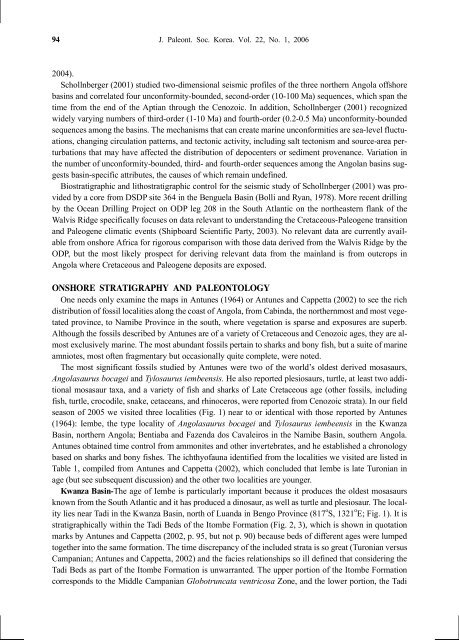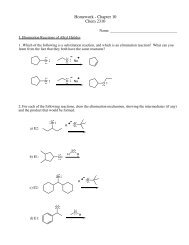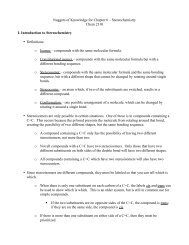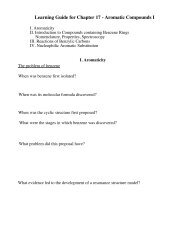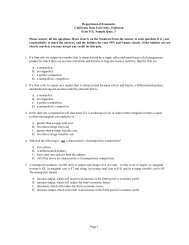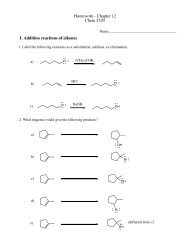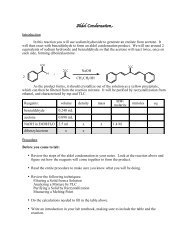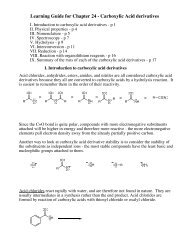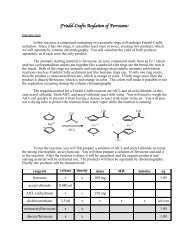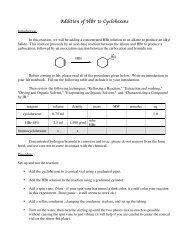the occurrence and geological setting of cretaceous dinosaurs
the occurrence and geological setting of cretaceous dinosaurs
the occurrence and geological setting of cretaceous dinosaurs
- No tags were found...
You also want an ePaper? Increase the reach of your titles
YUMPU automatically turns print PDFs into web optimized ePapers that Google loves.
J. Paleont. Soc. Korea. Vol. 22, No. 1, 20062004).Schollnberger (2001) studied two-dimensional seismic pr<strong>of</strong>iles <strong>of</strong> <strong>the</strong> three nor<strong>the</strong>rn Angola <strong>of</strong>fshorebasins <strong>and</strong> correlated four unconformity-bounded, second-order (10-100 Ma) sequences, which span <strong>the</strong>time from <strong>the</strong> end <strong>of</strong> <strong>the</strong> Aptian through <strong>the</strong> Cenozoic. In addition, Schollnberger (2001) recognizedwidely varying numbers <strong>of</strong> third-order (1-10 Ma) <strong>and</strong> fourth-order (0.2-0.5 Ma) unconformity-boundedsequences among <strong>the</strong> basins. The mechanisms that can create marine unconformities are sea-level fluctuations,changing circulation patterns, <strong>and</strong> tectonic activity, including salt tectonism <strong>and</strong> source-area perturbationsthat may have affected <strong>the</strong> distribution <strong>of</strong> depocenters or sediment provenance. Variation in<strong>the</strong> number <strong>of</strong> unconformity-bounded, third- <strong>and</strong> fourth-order sequences among <strong>the</strong> Angolan basins suggestsbasin-specific attributes, <strong>the</strong> causes <strong>of</strong> which remain undefined.Biostratigraphic <strong>and</strong> lithostratigraphic control for <strong>the</strong> seismic study <strong>of</strong> Schollnberger (2001) was providedby a core from DSDP site 364 in <strong>the</strong> Benguela Basin (Bolli <strong>and</strong> Ryan, 1978). More recent drillingby <strong>the</strong> Ocean Drilling Project on ODP leg 208 in <strong>the</strong> South Atlantic on <strong>the</strong> nor<strong>the</strong>astern flank <strong>of</strong> <strong>the</strong>Walvis Ridge specifically focuses on data relevant to underst<strong>and</strong>ing <strong>the</strong> Cretaceous-Paleogene transition<strong>and</strong> Paleogene climatic events (Shipboard Scientific Party, 2003). No relevant data are currently availablefrom onshore Africa for rigorous comparison with those data derived from <strong>the</strong> Walvis Ridge by <strong>the</strong>ODP, but <strong>the</strong> most likely prospect for deriving relevant data from <strong>the</strong> mainl<strong>and</strong> is from outcrops inAngola where Cretaceous <strong>and</strong> Paleogene deposits are exposed. One needs only examine <strong>the</strong> maps in Antunes (1964) or Antunes <strong>and</strong> Cappetta (2002) to see <strong>the</strong> richdistribution <strong>of</strong> fossil localities along <strong>the</strong> coast <strong>of</strong> Angola, from Cabinda, <strong>the</strong> nor<strong>the</strong>rnmost <strong>and</strong> most vegetatedprovince, to Namibe Province in <strong>the</strong> south, where vegetation is sparse <strong>and</strong> exposures are superb.Although <strong>the</strong> fossils described by Antunes are <strong>of</strong> a variety <strong>of</strong> Cretaceous <strong>and</strong> Cenozoic ages, <strong>the</strong>y are almostexclusively marine. The most abundant fossils pertain to sharks <strong>and</strong> bony fish, but a suite <strong>of</strong> marineamniotes, most <strong>of</strong>ten fragmentary but occasionally quite complete, were noted.The most significant fossils studied by Antunes were two <strong>of</strong> <strong>the</strong> world’s oldest derived mosasaurs,Angolasaurus bocagei <strong>and</strong> Tylosaurus iembeensis. He also reported plesiosaurs, turtle, at least two additionalmosasaur taxa, <strong>and</strong> a variety <strong>of</strong> fish <strong>and</strong> sharks <strong>of</strong> Late Cretaceous age (o<strong>the</strong>r fossils, includingfish, turtle, crocodile, snake, cetaceans, <strong>and</strong> rhinoceros, were reported from Cenozoic strata). In our fieldseason <strong>of</strong> 2005 we visited three localities (Fig. 1) near to or identical with those reported by Antunes(1964): Iembe, <strong>the</strong> type locality <strong>of</strong> Angolasaurus bocagei <strong>and</strong> Tylosaurus iembeensis in <strong>the</strong> KwanzaBasin, nor<strong>the</strong>rn Angola; Bentiaba <strong>and</strong> Fazenda dos Cavaleiros in <strong>the</strong> Namibe Basin, sou<strong>the</strong>rn Angola.Antunes obtained time control from ammonites <strong>and</strong> o<strong>the</strong>r invertebrates, <strong>and</strong> he established a chronologybased on sharks <strong>and</strong> bony fishes. The ichthy<strong>of</strong>auna identified from <strong>the</strong> localities we visited are listed inTable 1, compiled from Antunes <strong>and</strong> Cappetta (2002), which concluded that Iembe is late Turonian inage (but see subsequent discussion) <strong>and</strong> <strong>the</strong> o<strong>the</strong>r two localities are younger.Kwanza Basin-The age <strong>of</strong> Iembe is particularly important because it produces <strong>the</strong> oldest mosasaursknown from <strong>the</strong> South Atlantic <strong>and</strong> it has produced a dinosaur, as well as turtle <strong>and</strong> plesiosaur. The localitylies near Tadi in <strong>the</strong> Kwanza Basin, north <strong>of</strong> Lu<strong>and</strong>a in Bengo Province (817 o S, 1321 o E; Fig. 1). It isstratigraphically within <strong>the</strong> Tadi Beds <strong>of</strong> <strong>the</strong> Itombe Formation (Fig. 2, 3), which is shown in quotationmarks by Antunes <strong>and</strong> Cappetta (2002, p. 95, but not p. 90) because beds <strong>of</strong> different ages were lumpedtoge<strong>the</strong>r into <strong>the</strong> same formation. The time discrepancy <strong>of</strong> <strong>the</strong> included strata is so great (Turonian versusCampanian; Antunes <strong>and</strong> Cappetta, 2002) <strong>and</strong> <strong>the</strong> facies relationships so ill defined that considering <strong>the</strong>Tadi Beds as part <strong>of</strong> <strong>the</strong> Itombe Formation is unwarranted. The upper portion <strong>of</strong> <strong>the</strong> Itombe Formationcorresponds to <strong>the</strong> Middle Campanian Globotruncata ventricosa Zone, <strong>and</strong> <strong>the</strong> lower portion, <strong>the</strong> Tadi


